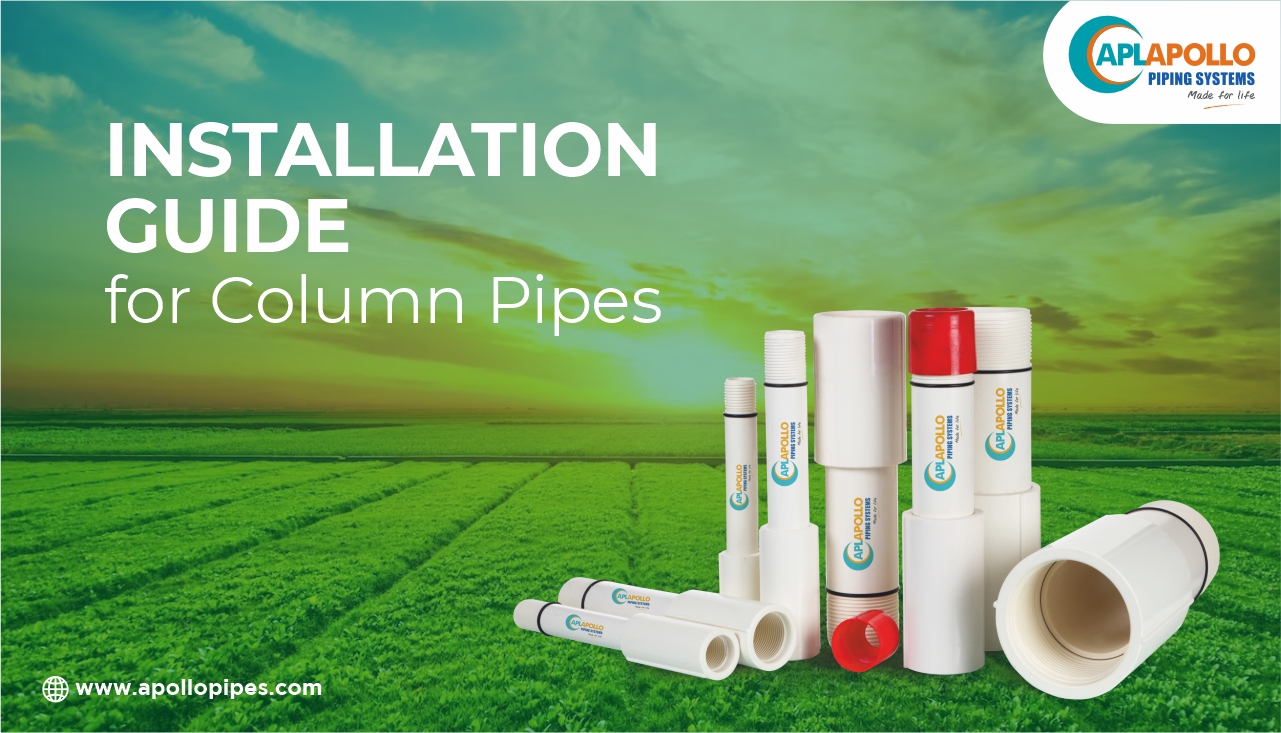Column pipes are used for rising water in submersibles and used as jet pumps for Industrial and domestic mining, irrigation, and chemical distribution. Column pipes are usually inert to corrosion, erosion, and chemical reactions. They can withstand shock and jerk load due to their unique thread design. As a result, these pipes are suited for long-term use in salty, sandy, and chemically aggressive water.
Installation Guidelines for Column Pipes: Before installing column pipes, make sure of the availability of the following accessories.
1.) "O" Rings
The "O" rings serve as seals and grippers. It provides a leak-proof system and absorbs pump vibrations.
2.) Pump Guards
Pump Guards can be installed between the bottom pipe and the bottom adaptor. A pump Guard is advised for places where severe pump vibrations are noted.
3.) Top and Bottom Adaptors
The adaptors in stainless steel and cast mild steel come in a wide variety depending on the size and specifications of the column pipes.
Installation Steps Of Column Pipes

Step 1. Ensure to hold the coupler by hand before opening or joining the pipe/adopter.

Step 2. Using a chain wrench, join the metal connector with the submersible pump.

Step 3. Tighten the pipe until the needed last jerk with the rope that is visible in the half of the rubber ring.

Step 4. Ensure to clean the threads with clean water before joining the pipes.

Step 5. Ensure that the pump guard is installed properly before joining the pipes.

Step 6. Place the clamp below the coupler as you lower the pipes, then clamp the top adaptor to the last pipe.
DOs and DON'Ts while installing column pipes
Do's
1.) Check the pipe threads and clean them with normal water to avoid forced jointing.
2.) While tightening the thread, make sure that the rubber seal is properly set in its location without twisting or cutting to prevent leakage.
3.) Before connecting the pipe to the pump, make sure that a pump guard is installed between the pipe coupler and the pump metal adaptor.
4.) Assemble the metal adaptor with the pump. During pipe assembly, initially hold the pipe/coupler with your hands and tighten it till the final jerk. To tighten the pipe properly, always use a rope/strap wrench.
5.) Fix a nylon rope to the cast iron adaptor as a precaution against the submersible pump dropping due to a mishap.
6.) At the time of lowering the column pipe into the borewell, clamp the pipe below the coupler at the defined location on the pipe.
7.) Always use a chain pulley for lowering column pipes.
Don'ts
1.) Do not use any chemicals while cleaning the pipe thread.
2.) Use no lubrication on the pipe thread.
3.) Do not overtighten the joints.to avoid breakage.
4.) Do not use pipe/chain wrench to tighten the joints.
5.) Make sure that the gravel is not dumped at a very high rate to avoid excess abrasion.
6.) Do not hammer the pipes during assembly.








